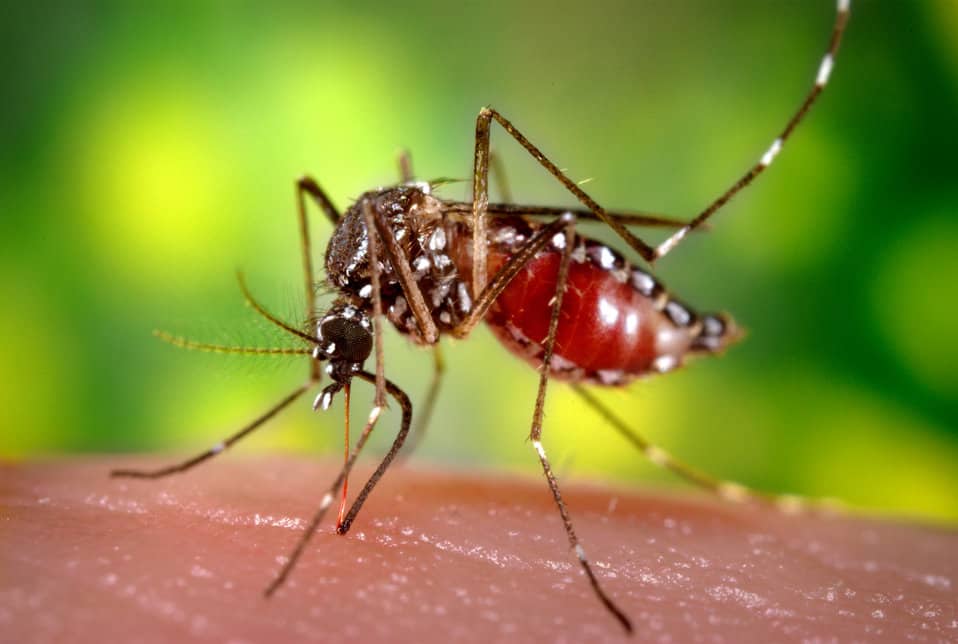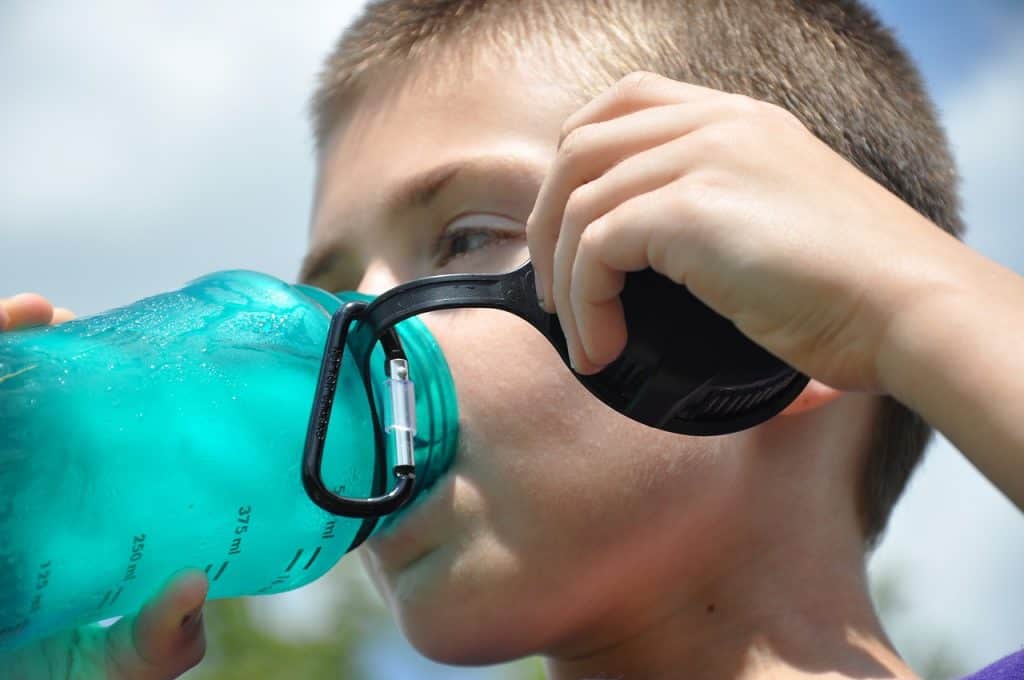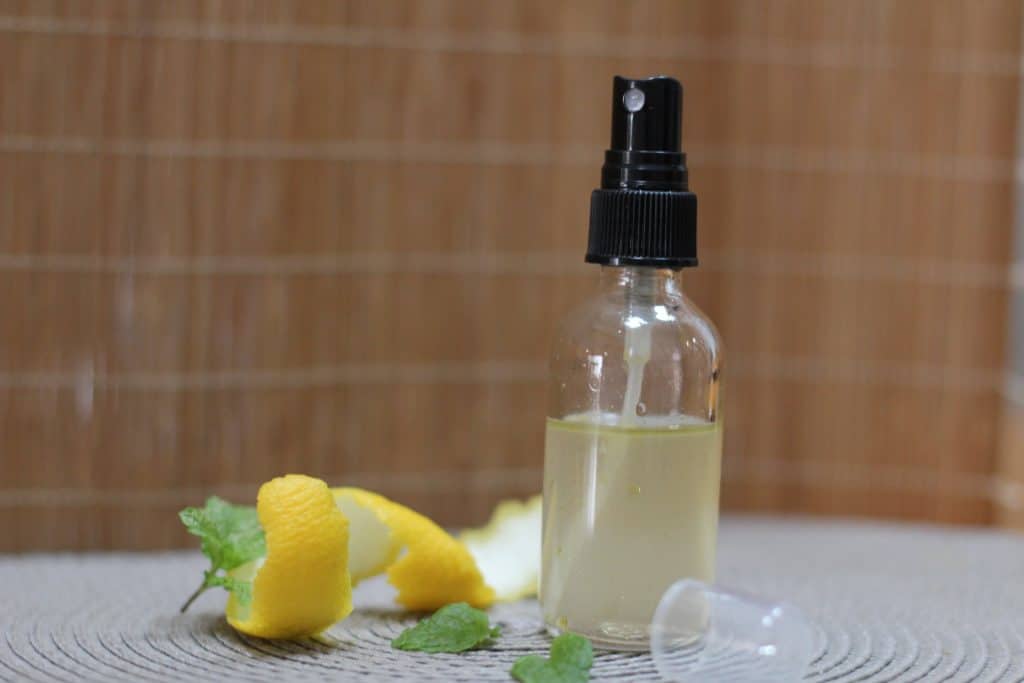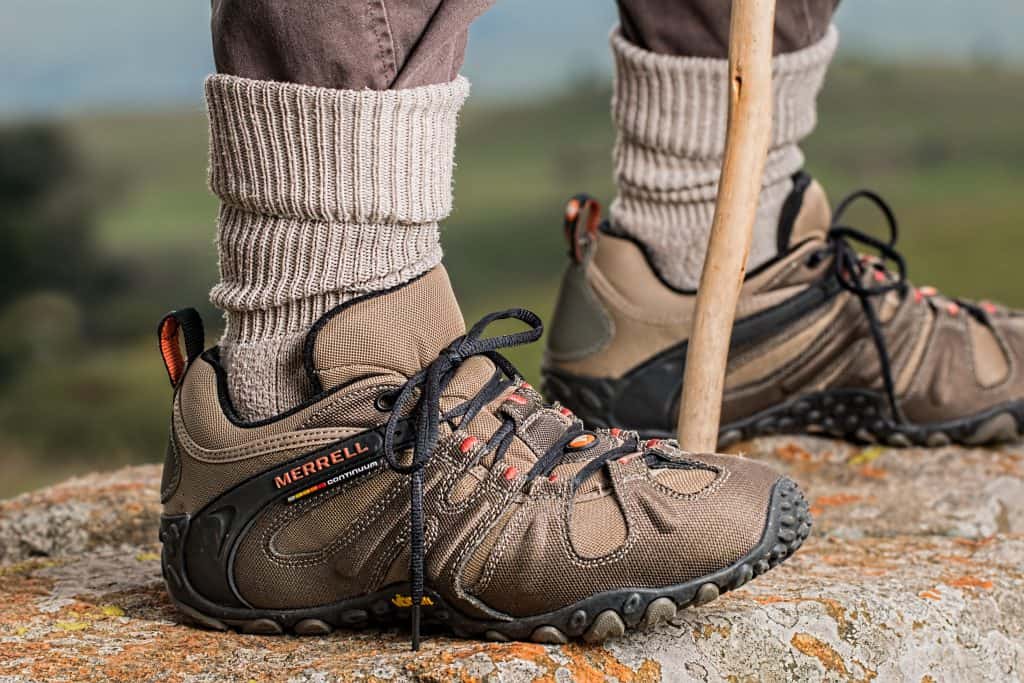Chafing on a long backpacking or hiking trip is one of the most unpleasant things you can experience. It’s super painful but also really easy to treat, which is why I present to you these tips!
- Wear clothes that aren’t baggy or too tight
- Make sure your backpack straps aren’t loose
- Avoid clothes made of cotton
- Don’t tuck your shirt in your pants
- Get a backpack with a mesh back
- Bring wipes for essential use
- Wash your body as much as you can
- Wash your clothes as much as you can
- Use lubricants like Vaseline to prevent chafing
- Drink lots of water so your sweat contains less salt
- Bring proper underwear designed for hiking
- Take quick breaks whenever you feel chafing
- Layer your clothes and avoid shaving certain areas to reduce friction
- What is chafing?
- Where does chafing occur?
- Tips to help prevent chafing
- 1. Get properly fitting clothes
- 2. Get properly fitting gear
- 3. Avoid cotton
- 4. Don't tuck your shirt
- 5. Get a ventilated backpack
- 6. Clean your bum
- 7. Wash your body
- 8. Keep your clothes clean
- 9. Lubricate yourself
- 10. Hydrate yourself
- 11. Get hiking underwear
- 12. Take quick breaks
- 13. Extra tips – Clothes layering and shaving
- How do you treat chafing?
What is chafing?
First, before I get into preventing chafing, you must understand what chafing is.
Chafing is an irritation or injury to your skin caused by repeated skin-to-skin rubbing or your skin rubbing against wet clothing. There are of course many more factors which I’ll eventually go over in this post.
This friction that your skin endures leads to redness, irritation, and itching. If you keep damaging your skin like this it can lead to more serious concerns like bleeding, blisters, infections, and large wounds.
Where does chafing occur?
Chafing usually occurs wherever skin comes to contact. There are many sensitive areas that are prone to chafing.
- Inner thighs: They usually chafe from baggy or very tight fitted clothes.
- Waist: It can get chafed from a bad fitted belt or pants.
- Wrists: You can easily avoid wrist chafing by making your watch looser.
- Ankles and feet: Avoid tight shoes or boots.
- Toes: Also caused by tight footwear.
- Chest and back: Wear your backpack properly to avoid chafing.
- Shoulders: Caused by long backpack straps.
- Nipples: Put bandages over your nipples to avoid your shirt rubbing against them.
As you can see above, chafing is usually caused by a few specific factors. Usually bare skin, clothes, backpacks, sweat, and a few more factors. Remember that warm and humid weather will make chafing even more frequent and serious.
Let’s start getting into the tips!
Tips to help prevent chafing
1. Get properly fitting clothes
Proper fitting clothes are extremely important. Baggy shirts and clothes will wrinkle and fold, making them rub against your skin a lot! If your clothes are too tight, it’ll also cause frequent chafing. Just try to wear comfortable clothes that fit your body properly (especially for your underwear and top).
Try avoiding belts or tying your waist pack too tightly. This’ll cause chafing on your waist which is very uncomfortable.
If you feel your clothes rubbing against your skin and you have no other option, you can always add some extra padding.
Clothes aren’t the only concern, so is your footwear! Wearing small hiking boots or shoes that don’t fit your feet will damage them. If your shoes or boots are loosely tied, they’ll damage your ankles. The same goes for very tightly tied shoes. Getting the right footwear also ensures proper cushioning and arch support from shoes that help reduce strain on the Achilles tendon as well as shoes that provide great heel support for Planter Fasciitis.
What I do to fully prevent my feet from getting blisters is I put on 2 layers of socks. The best method I found was putting a normal sock on top of a wicking undersock.
“Wicking” clothes are made of fabric designed to get rid of your sweat instead of absorbing it.
Friction occurs less often in your feet because of the 2 layers of socks protecting them! The wicking undersock also helps get rid of sweat.
2. Get properly fitting gear
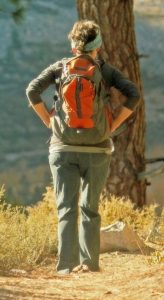
Backpack straps that are too long will cause a lot of friction and will dig into your shoulders. You can learn how to shorten your backpack straps here. Just remember that you need to make sure your backpack fits you well.
If your hike is very long your backpack straps will probably dig into your shoulders no matter what. Putting something in between your shoulder and backpack straps like extra clothing will prevent chafing.
I would highly suggest getting a wicking base layer shirt. It’s basically like leggings but for your upper body. They take sweat away from your skin and prevent backpack straps from chafing your shoulders.
3. Avoid cotton
You should not wear any clothes made of cotton to avoid chafing. Cotton loves to soak up water and sweat, plus it takes an extremely long amount of time to dry once it’s wet!
Cotton will stick to your skin like glue once it’s wet, which is something you’d want to avoid.
A lot of people don’t realize that jeans are made of cotton (this is because they are very durable)! On your next hiking or backpacking trip, do not bring any jeans with you.
Wearing cotton in the winter seems like a good idea, but sweating occurs during any activity no matter the temperature. You could be freezing but still sweating profusely.
What’s the solution? Just wear synthetic or wool clothing instead of cotton. They both quickly dry and absorb barely any sweat.
Synthetic fabrics accumulate smell quickly but can also be washed frequently since they dry very fast.
Leggings or spandex shorts are great for protecting your inner thighs, the same with long underwear (I will talk about this soon). For men, wearing loose shorts on top of leggings or spandex shorts is pretty common and works perfectly fine.
4. Don’t tuck your shirt
Almost everyone experiences a sweaty back (especially if you’re wearing a backpack). If you tuck your shirt into your pants then all of that back sweat will head into your underwear.
Also, tucking your shirt in your pants will cause waist chafing. The simple solution is just to not tuck your clothes!
5. Get a ventilated backpack
Backpacks are one of the leading factors of chafing and sweating. This can easily be solved if you get a backpack with a suspended mesh back. The suspended mesh back is more breathable and makes your back sweat less.
It’s also a very light material so your backpack will weigh a little bit less than a normal backpack!
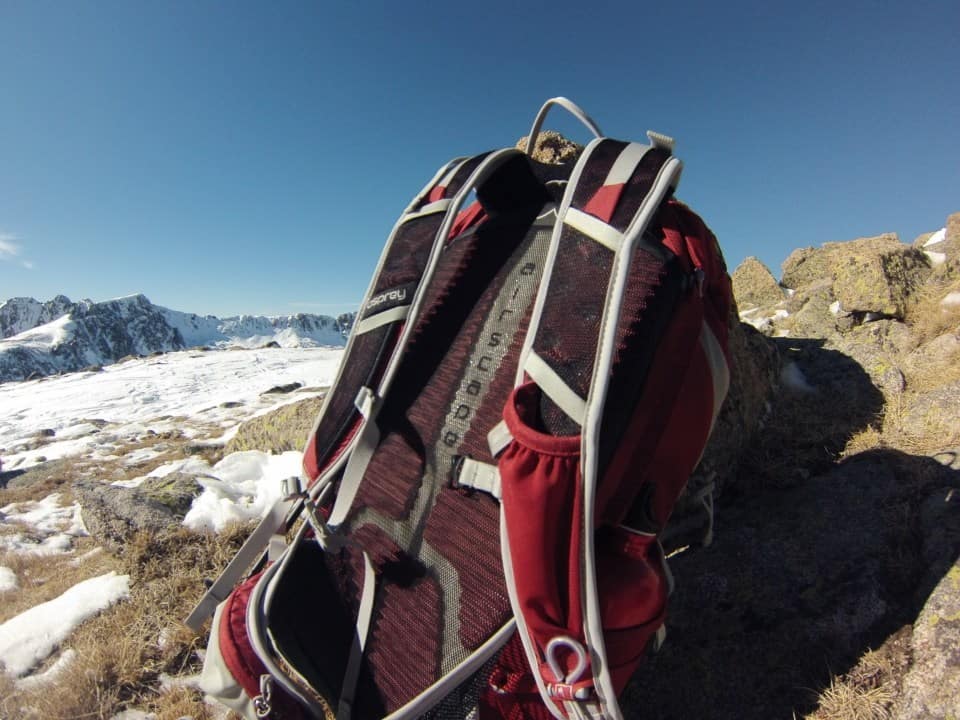
6. Clean your bum
You must always be prepared, which is why I bring disposable wet wipes with me.
If you take a poo during your trip, you must fully clean up that nasty stuff! Wipe your behind until it is fully clean. You do not want to be walking around with that stuff in between your butt cheeks. Not only is it gross but it’ll also irritate them a lot!
7. Wash your body
Keeping your body clean is not only good for hygiene, but it’s also great for preventing chafing. This is because chafing is caused by the salt in your sweat which rubs against your skin.
Dried sweat, dead skin cells, and lots of bacteria will accumulate if you do not shower regularly. All of these are factors in increasing friction on your skin. Keep in mind that bacteria build fast, so shower the moment before you go out!
This means you should pack up everything before showering. If you shower and then pack your backpack or engage in any mild activity, it’ll make you sweat.
Put extra effort into washing your sweaty areas like your armpits, butt, and crotch.
If you find a river or a lake during your hike, I recommend you wash in it. Otherwise, it’s a wasted opportunity! If there are no lakes or rivers during your hike and you want to clean yourself, you can just use disinfectant wipes.
Make sure to be fully dry after you shower, take a swim in a lake, or use wet wipes. Wet clothes will cause chafing (as I mentioned before).
8. Keep your clothes clean
You should wash your clothes as often as possible to get out any sweat and dirt. Please try to not use the same shirt or clothes without cleaning them for over a day. Not only are dirty clothes unhygienic, but they also increase chafing.
If you are doing a multi-day hiking or backpacking trip, you can buy wash bags. You just put your clothes in them with a bit of soap and water and shake them up. Let them dry and boom, you’re good to go!
Lakes and rivers are also good for cleaning your clothes. Just remember to keep some soap on hand.
9. Lubricate yourself
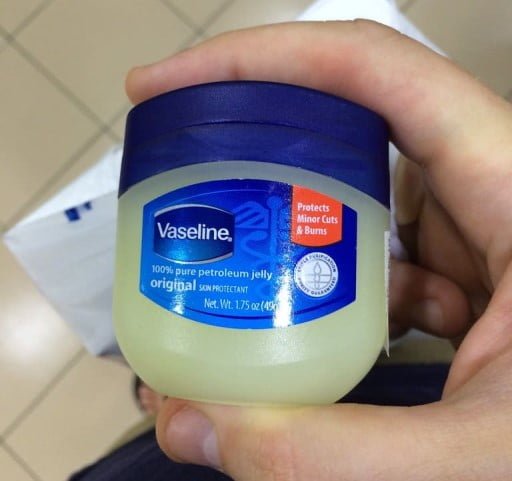
There are many lubricants on the market like Vaseline that help eliminate friction. Make sure you clean and dry the area first before applying anything. If you don’t want to use Vaseline, you can use Body Glide or zinc oxide ointment (the same stuff used for diaper rashes).
If you are taking a very long hike, I recommend lubricating a lot in a few specific areas. Your inner thighs, waist, back, and feet are all prone to chafing.
Remember to take good care of your feet as they absorb all the shock. Almost everyone who isn’t careful gets blisters. There’s a good product on the market called Foot Glide which will help lubricate your feet.
You can also powder your skin to make it drier. If you don’t have any powder you can go ahead and use corn starch. There are many great anti-chafing powders on the market that will also prevent sweating.
Remember to put lubricants or powder on your skin before it’s damaged! Putting lubricants on raw skin will hurt a lot!
10. Hydrate yourself
The more water you drink, the less concentrated salt will be in your sweat.
You can easily dilute the salt in your sweat by drinking lots of water before going on a hike. Also, remember to drink enough water during the hike to keep your urine light yellow or clear.
The less salt in your sweat, the less your skin will chafe. Salt is not good for the skin and is itchy!
11. Get hiking underwear
There are a few brave people that don’t wear underwear when they’re hiking, but if you’re not a part of this small group, getting the right underwear is very important.
Do not get cotton underwear! It’ll tear your butt and delicate parts over a long period of time. Cotton also absorbs sweat and sticks to your skin (as I mentioned previously).
Avoid other materials like Modal, Rayon, Viscose, Tencel, Bamboo, and Lyocell. These wooden materials also act like cotton.
I recommend you get synthetic, sweat-wicking underwear. They might not be very comfortable, but it solves all your chafing problems. The only downside is that synthetic underwear smells a lot once it accumulates sweat. It’s easy to rinse though as it dries very quickly! Wool is also a great material but I’d avoid it if I were you. It doesn’t dry as fast as synthetic fabrics.
I also recommend you get underwear with at least 5 inches of long leg to protect your thighs. Avoiding thongs and small underwear is very important. If you’re hiking during the winter or cold weather, you can get 9+ inches of long leg to help keep you warm.
There’s this new innovative company I found that makes underwear specifically for men. They’re called Sheath and they make underwear with a little pouch for your junk. You can find them on Amazon.
Make sure your underwear is not too tight or too loose.
12. Take quick breaks
You should take a lot of brief breaks during your hike. It actually helps a lot more than you think!
When you feel slight itchiness or heat, you should take a break. Those are the first signs of chafing and the more you ignore it the worse it gets. Deal with the discomfort right when you notice it!
Stopping for about 5 minutes and letting the sweat dry out will prevent chafing. Remember to disinfect the chafed area and then apply lubrication every single time you take a break.
13. Extra tips – Clothes layering and shaving
Remember to layer your clothing properly so you can minimize sweating. Put the lightest and most breathable clothing first.
You should also remove all the tags from your clothes! Tags can irritate your skin a lot.
I am a little embarrassed to mention this tip but, do not shave your nether regions! I tried this before going on a multi-day hike and it was not fun. It was very scratchy and actually increased friction between my skin.
Remember that if you’re overweight, you should take extra precautions and lubricant. The more skin you have, the more it’ll rub and chafe.
How do you treat chafing?
All of the methods I mentioned above are good for preventing chafing, but what if chafing occurs?
Even with all the precautions you can take, there is still a chance that chafing will occur. This section will prepare you in case you get chafed.
1. Clean the affected area
As I mentioned above, you should clean and wash the chafed area when you are taking a break or once you are done hiking.
Disinfectant wipes do work but I’d recommend water with soap as it’s more gentle. Dry the area by patting it, do not rub it dry! I’ve done that and it’s very painful.
2. Apply lotion
Make sure to clean the area before applying lotion.
Applying lotion and ointment isn’t only good for preventing chafing, but also good for healing it! I’d recommend applying it at night. Zinc oxide cream, coconut oil, and Vaseline are all great options for healing your chafed area and numbing the pain.
If you’re going to sleep in a sleeping bag, make sure to cover the area you put lotion over with clothing! You do not want lotion going everywhere in your sleeping bag.
3. Let it heal
Remember that skin takes time to heal. You need to make sure to let your skin breathe and try to not put bandages on it. Bandages will make it heal way slower.
Sometimes you might not have an option, but try to not move the chafed area. The more it rubs, the worse it’ll get. If you can’t take a day off to let your skin heal, you can use some of the few methods I mentioned earlier.
Remember to always wash the chafed area with soap and water when you get to camp!
I wish you have a fun trip without any chafing!
Sean is an accomplished backpacker with over 10 years of experience exploring the great outdoors. He has a passion for hiking, camping and off-grid living.

